In today’s dynamic travel landscape, packaging is no longer merely a vessel for products—it’s become an integral part of the brand experience, a sustainability statement, and a powerful marketing tool. As we navigate through 2025, travel kit packaging continues to evolve at an unprecedented pace, driven by changing consumer preferences, technological innovations, and a growing emphasis on environmental responsibility.
This comprehensive guide explores cutting-edge packaging strategies, emerging trends, and lucrative brand opportunities in the travel kit sector, with insights on how Othilapak’s expertise can elevate your brand’s travel offerings in this competitive market.
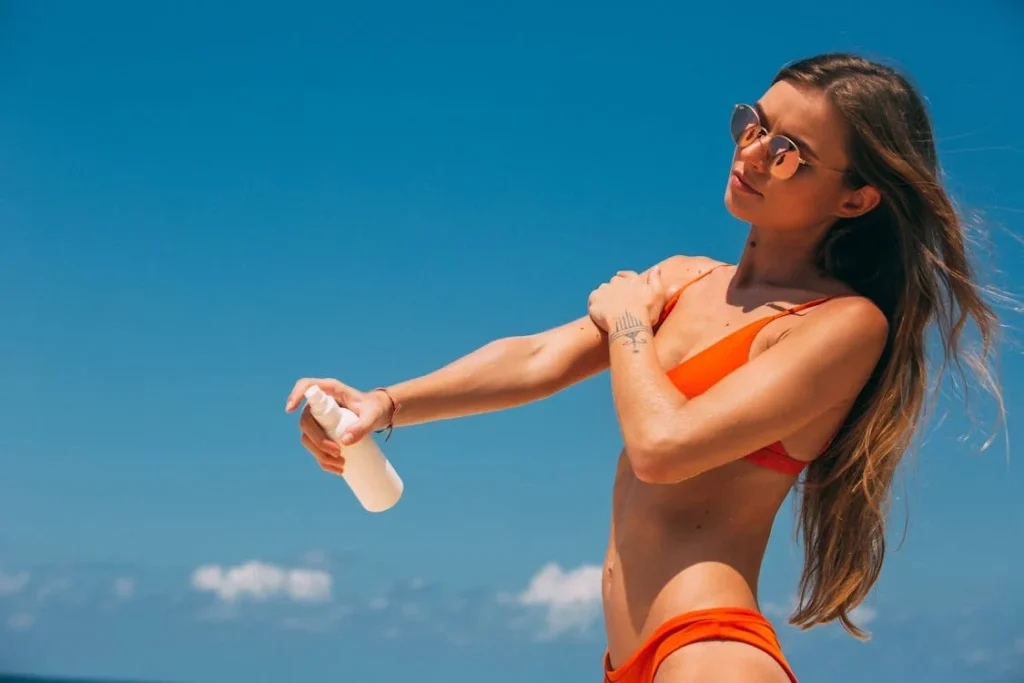
1. The Evolving Landscape of Travel Kit Packaging
The travel kit industry has undergone a remarkable transformation in recent years. What was once an afterthought—simple containers for travel-sized essentials—has evolved into a sophisticated market where packaging serves multiple purposes: protecting contents, communicating brand values, enhancing user experience, and increasingly, minimizing environmental impact.
As global travel rebounds to record levels in 2025, travelers are more discerning than ever about the products they carry. The modern traveler seeks convenience without compromise—expecting travel kits that are not only functional and aesthetically pleasing but also aligned with their values, particularly regarding sustainability.
Market research indicates that the global travel kit packaging market is projected to reach $13.7 billion by 2027, with a compound annual growth rate of 5.8%. This growth is fueled by rising disposable incomes, increasing travel frequency, and a growing preference for premium travel experiences across demographics.
For brands, this presents both a challenge and an opportunity. The right packaging strategy can differentiate products in a crowded marketplace, foster brand loyalty, and justify premium pricing. Conversely, failing to innovate in this space risks losing market share to more forward-thinking competitors.
2. Current Travel Kit Packaging Trends Shaping the Industry
Eco-Friendly Materials Revolution
The shift toward sustainable packaging is no longer a trend but an expectation. In 2025, we’re witnessing a wholesale revolution in materials used for travel kit packaging. Biodegradable plastics derived from cornstarch, sugarcane, and other renewable resources are replacing traditional petroleum-based plastics. Recycled ocean plastic has gained significant traction, with brands like Parley and Clean Planet incorporating these materials into their travel kit containers.
Bamboo, one of the fastest-growing plants on Earth, has emerged as a popular choice for travel kit packaging due to its durability and biodegradability. Brands like Bambaw and EcoTools have pioneered bamboo travel containers that decompose naturally at the end of their lifecycle.
Paper-based packaging solutions have also evolved significantly, with water-resistant treatments that maintain durability without compromising recyclability. Seed-embedded packaging—which can be planted after use—represents the cutting edge of this approach, turning what would be waste into wildflowers or herbs.
Minimalist Packaging Approaches
The “less is more” philosophy has firmly taken root in travel kit design. Brands are stripping away excess packaging layers, focusing instead on clean lines, simple color palettes, and uncluttered designs that communicate sophistication and environmental consciousness.
Glossier’s travel kit exemplifies this approach with its signature pink bubble wrap pouches that serve as both protective packaging and reusable travel cases. Similarly, Aesop’s travel kits feature minimal branding and recyclable materials while maintaining their distinctive aesthetic appeal.
This minimalist approach extends beyond aesthetics to the actual amount of material used. “Right-sizing” has become a priority, with brands carefully calculating the optimal dimensions for their packaging to eliminate waste while ensuring adequate protection.
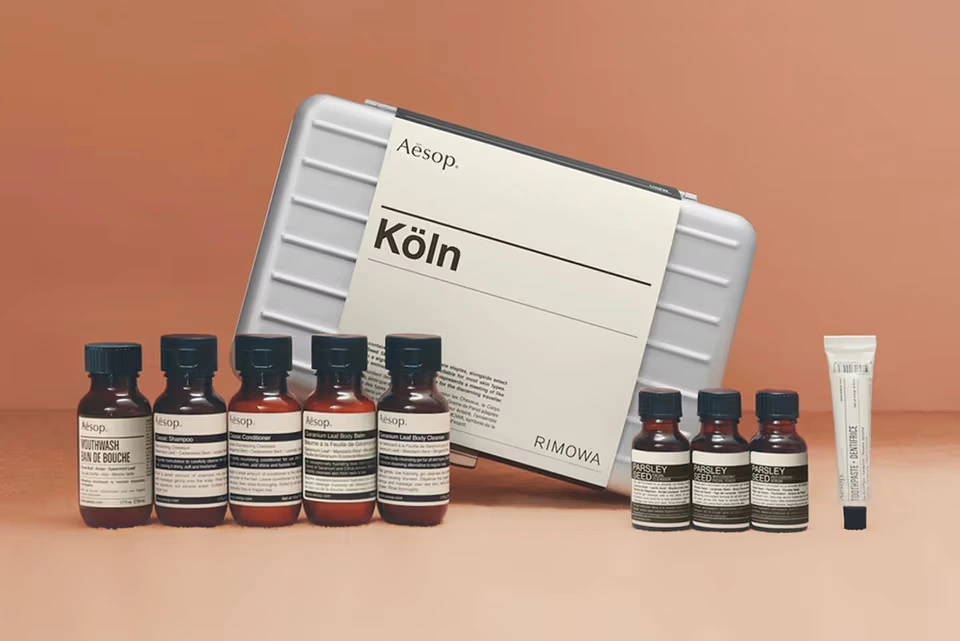
Aesop’s travel kits
Refillable Systems on the Rise
Perhaps the most significant shift in travel kit packaging is the move toward refillable systems. Brands like Kjaer Weis and La Bouche Rouge have pioneered luxury refillable cosmetics, while companies such as Myro and by Humankind offer subscription services for refill pods of deodorant, shampoo, and other travel essentials.
The economic and environmental benefits of this approach are substantial. For consumers, refillable systems typically reduce costs over time while minimizing waste. For brands, they create ongoing customer relationships and reduce packaging production costs. The environmental impact is equally significant—a refillable system can reduce packaging waste by up to 70% compared to single-use alternatives.
3. Technology Integration in Travel Packaging
Smart Packaging Innovations
The integration of technology into travel kit packaging has opened new frontiers for brand engagement. QR codes and NFC (Near Field Communication) tags now allow travelers to access product information, usage instructions, and brand content with a simple smartphone scan.
Luxury skincare brand SK-II has implemented NFC technology in their travel kits, enabling customers to authenticate products and access personalized skincare advice. Similarly, L’Occitane’s travel sets feature QR codes that link to virtual tours of their ingredient sources in Provence.
Augmented reality (AR) features are pushing these capabilities even further. Brands like Charlotte Tilbury have created AR experiences that allow customers to virtually “try on” makeup products from their travel kits, while Rituals uses AR to transport users to calming environments that complement their travel-sized wellness products.
Digital Tracking and Authentication
In an era of increasing concerns about counterfeit products, especially in the luxury travel kit segment, brands are leveraging technology for authentication and tracking. RFID (Radio-Frequency Identification) tags embedded in packaging allow companies to track products throughout the supply chain and verify authenticity.
Louis Vuitton’s travel kits now include blockchain-based authentication, providing customers with a digital certificate of authenticity that can be verified through their smartphones. This technology not only combats counterfeiting but also enhances the perceived value of the product.
For brands with complex global supply chains, blockchain technology offers unprecedented transparency. Customers can trace the journey of their travel kit components from source to shelf, verifying ethical sourcing claims and manufacturing practices.
4. Design Trends Capturing Consumer Attention
Clever Cutouts and Transparent Elements
Strategic use of die-cuts and transparent elements has emerged as a powerful design trend in travel kit packaging. These features serve both aesthetic and practical purposes—showcasing the products inside while reducing material usage.
Fenty Beauty’s travel kits feature distinctive geometric cutouts that reveal product colors, eliminating the need for printed color swatches. Herbivore Botanicals uses transparent packaging elements to highlight the natural clarity of their products, reinforcing their clean beauty positioning.
This transparency trend extends metaphorically to brand communications, with packaging that clearly communicates ingredients, sourcing practices, and disposal instructions—meeting the modern traveler’s desire for information and authenticity.
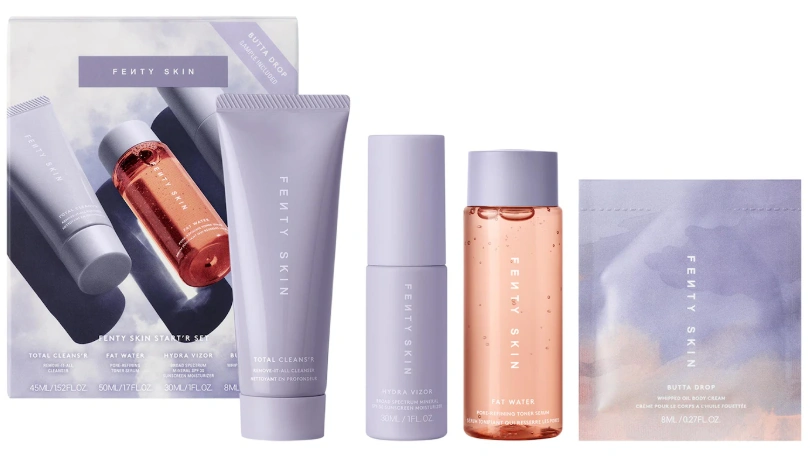
Fenty Beauty’s travel kits
Simplistic Scribbles and Hand-Drawn Aesthetics
In reaction to the digital perfection that dominates much of our visual landscape, hand-drawn elements and imperfect aesthetics have gained significant traction in travel kit design. These human touches create emotional connections and stand out in a sea of computer-generated imagery.
Brands like Aesop and Le Labo incorporate hand-drawn illustrations and handwritten elements in their travel kit packaging, creating a sense of artisanal quality and personal attention. This approach is particularly effective for brands targeting millennials and Gen Z travelers, who often value authenticity over polished perfection.
Curated Frames and Gallery-Worthy Packaging
Travel kit packaging is increasingly designed to be displayed rather than discarded. Hotel amenity kits from luxury properties like Aman Resorts and Four Seasons now feature packaging designed to be repurposed as keepsakes or decorative items.
Jo Malone’s travel collections come in packaging that resembles miniature art galleries, with products framed like precious objects. This approach transforms functional packaging into part of the luxury experience itself, extending the brand interaction beyond the product’s use.
5. Functional Innovations for Modern Travelers
Multi-Functional Packaging Solutions
The modern traveler values efficiency, and packaging that serves multiple purposes meets this need perfectly. Innovative brands are creating travel kit containers that transform into useful travel accessories.
Away’s travel kits include packaging that doubles as jewelry organizers or tech accessory holders. Glossier’s bubble wrap pouches have become iconic not just as packaging but as waterproof cosmetic bags that customers continue to use long after the original products are gone.
This approach not only adds value for the consumer but also extends the brand’s presence in their daily lives, turning packaging from a disposable afterthought into a valued possession.
Compact and Space-Efficient Designs
As airlines continue to restrict luggage allowances and travelers embrace more mobile lifestyles, space efficiency has become paramount in travel kit design. Collapsible containers, stackable components, and compression technology are addressing these needs.
Matador’s FlatPak toiletry bottles collapse as they empty, taking up minimal space in a traveler’s bag. Stacked skincare sets from brands like Drunk Elephant feature interlocking components that minimize wasted space while creating a distinctive visual identity.
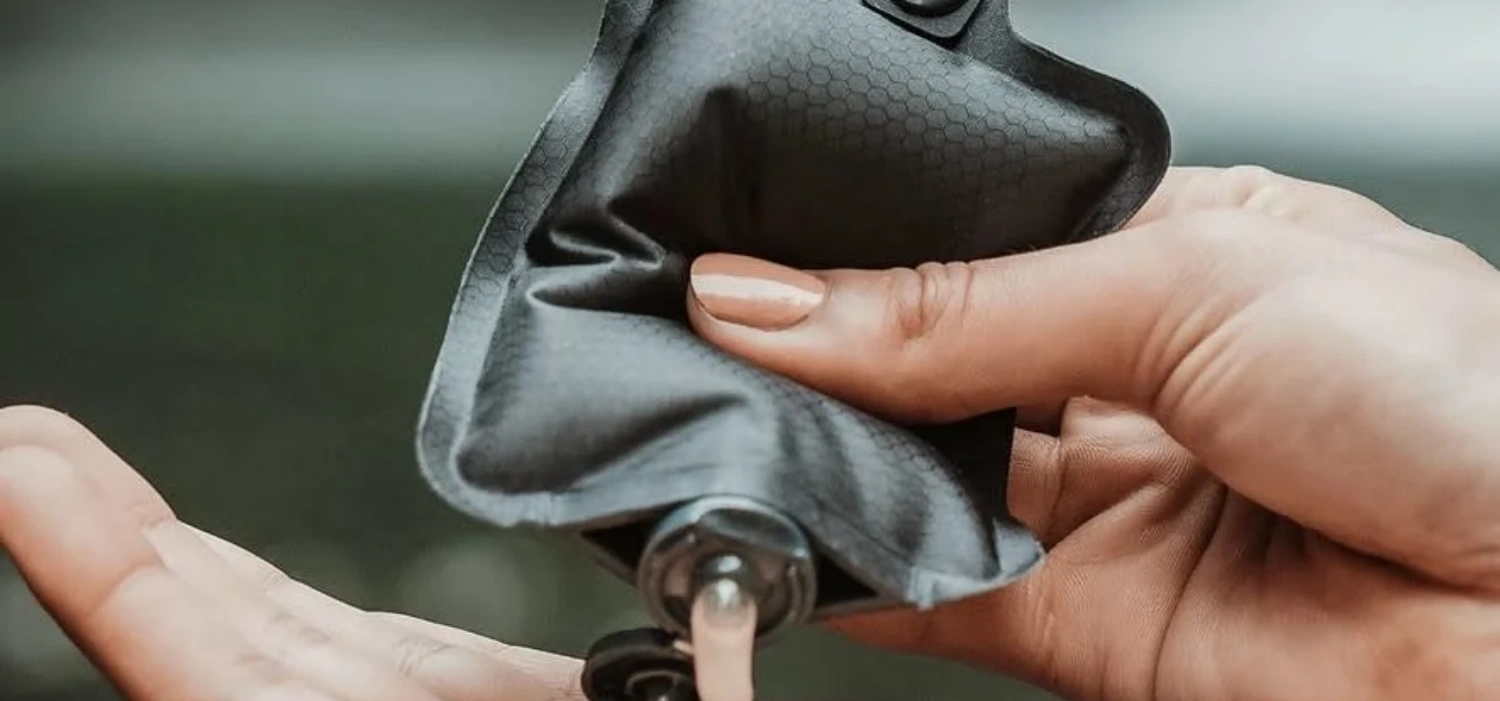
Matador’s FlatPak toiletry bottles
6. Strategic Approaches to Travel Kit Packaging
Demographic Considerations in Packaging Design
Effective travel kit packaging begins with a deep understanding of the target audience. Different demographic groups have distinct preferences, priorities, and pain points when it comes to travel products.
Baby Boomers typically value clarity in packaging—readable fonts, straightforward information, and ease of use. Millennials, meanwhile, often prioritize brands that align with their values and offer Instagram-worthy aesthetics. Gen Z travelers, the most sustainability-conscious generation yet, expect packaging to reflect environmental responsibility.
Gender considerations also influence packaging design, though the trend is increasingly toward gender-neutral approaches. Brands like Nécessaire and Malin+Goetz have successfully implemented minimalist, gender-inclusive packaging for their travel kits, appealing to a broader audience while reflecting contemporary attitudes toward gender.
Cultural considerations become particularly important for global brands. Colors, symbols, and even packaging shapes can carry different connotations across cultures. Successful international travel kit brands like Rituals and L’Occitane adapt their packaging to respect cultural sensitivities while maintaining brand consistency.
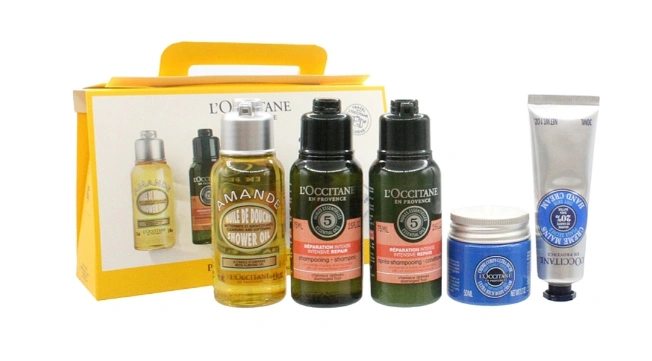
L’Occitane’s travel kit
Travel Purpose Segmentation
Different travel purposes demand different packaging solutions. Business travelers typically seek sleek, professional-looking travel kits that fit easily into carry-on luggage and project a polished image. Tumi and Montblanc excel in this space, with travel kits featuring sophisticated materials and efficient designs.
Leisure travelers often appreciate more playful, vacation-oriented packaging. Brands like Benefit and Too Faced create travel kits with whimsical designs that enhance the fun of vacation preparation.
Adventure travelers require durable, waterproof, and lightweight packaging that can withstand extreme conditions. Brands like Patagonia and Yeti have developed rugged travel containers specifically for outdoor enthusiasts.
Specialized travel markets present unique opportunities. Wellness retreat attendees gravitate toward calming, spa-like packaging aesthetics from brands like Rituals and Aveda. Medical tourism patients need clearly labeled, hygienic packaging for their specialized products.
7. Brand Storytelling Through Travel Kit Packaging
Creating Cohesive Brand Narratives
Travel kit packaging offers a powerful canvas for brand storytelling. The limited space forces brands to distill their narrative to its essence, communicating core values through materials, design elements, and copy.
Aesop masterfully uses their travel kit packaging to reinforce their brand’s intellectual, literary positioning. Their kits feature quotes from philosophers and writers, minimal design elements, and natural materials that collectively tell a story of thoughtful simplicity.
Sustainable travel brand Patagonia ensures their packaging communicates their environmental activism, using recycled materials and including information about their conservation initiatives directly on their travel kit packaging.
Destination-Inspired Packaging Concepts
Travel and destination themes provide rich inspiration for packaging design. Luxury hotel brand Six Senses creates amenity kits that incorporate design elements from each property’s location—textiles inspired by local crafts, colors drawn from the surrounding landscape, and materials sourced from nearby suppliers.
Limited edition travel kits themed around specific destinations have proven particularly successful. Diptyque’s city-inspired collections feature packaging illustrations of iconic landmarks, while Jo Malone’s London, Paris, and New York collections incorporate architectural elements from each city into their packaging design.
Collaborations with tourism boards and local artisans enhance authenticity while supporting local economies. Thailand’s Tourism Authority has partnered with several beauty brands to create travel kits featuring packaging designed by Thai artists, showcasing traditional patterns and techniques.
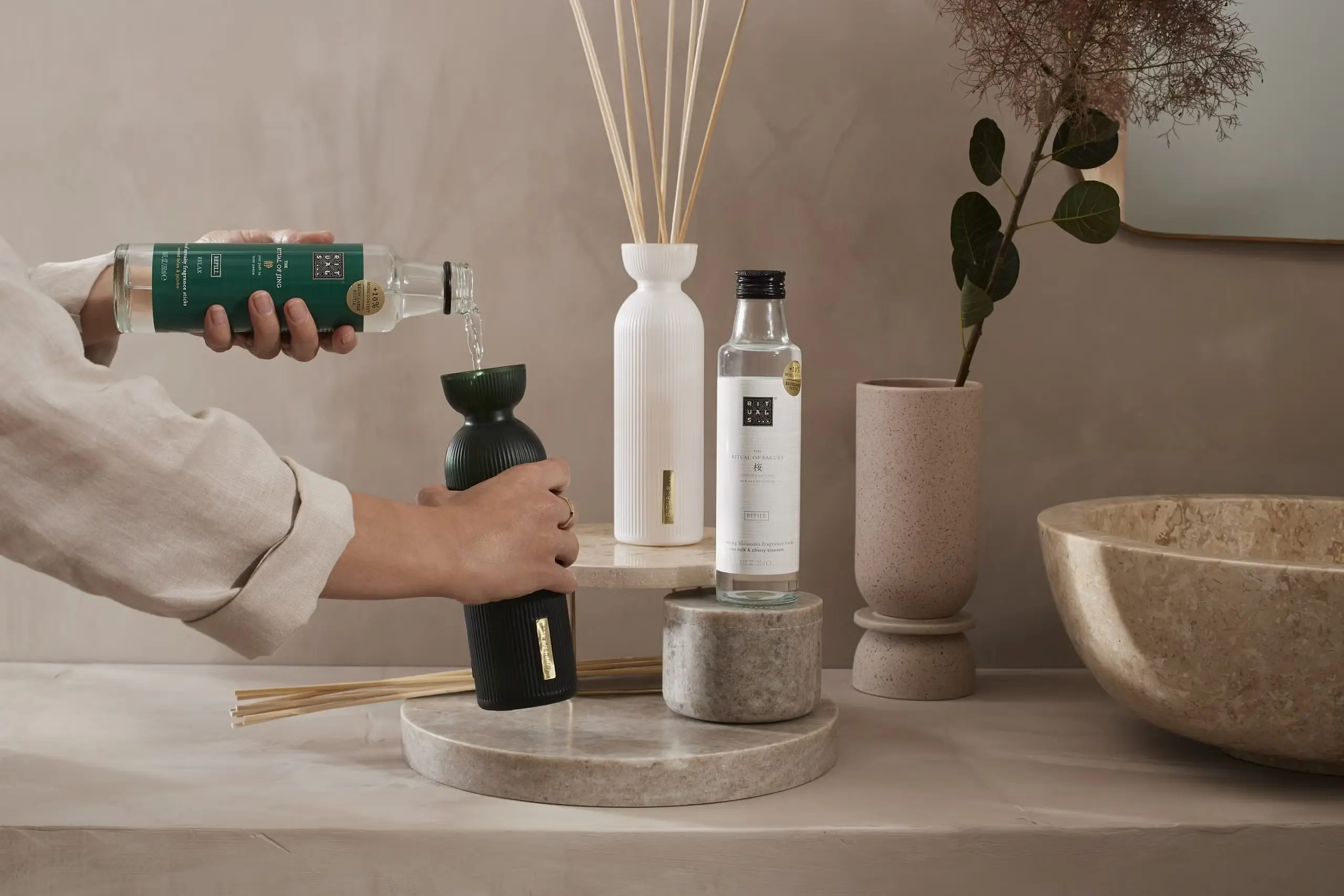
Rituals’s spa-like packaging
8. Optimizing the Unboxing Experience
Social Media-Worthy Packaging Design
In today’s digital landscape, the “unboxing moment” has become a crucial marketing opportunity. Brands are designing travel kit packaging specifically to create shareable moments that extend their reach through social media.
Charlotte Tilbury’s travel kits feature rose gold packaging that photographs beautifully for Instagram, often including surprise elements like hidden messages or unexpected pop-up components that encourage sharing. Glossier’s distinctive pink bubble wrap pouches have become so recognizable that they serve as free advertising whenever they appear in social media posts.
Incorporating elements that encourage user-generated content—like branded hashtags printed on packaging or “share your look” prompts—further amplifies this effect. Fenty Beauty includes specific lighting recommendations for photographing their travel-sized products, acknowledging and facilitating the social sharing that has become integral to beauty culture.
Sensory Engagement Strategies
The most memorable packaging engages multiple senses. Tactile elements—like Chanel’s travel pouches with their distinctive quilted texture or Hermès kits wrapped in their signature grainy leather—create a premium feel that reinforces brand positioning.
Scent integration has become increasingly sophisticated, with brands like Jo Malone and Diptyque incorporating subtle fragrances into their packaging materials. When a customer opens a Jo Malone travel kit, they experience the brand’s signature scent before even touching the products inside.
The psychology of materials plays a significant role in perceived value. The weight of packaging components, the sound of a magnetic closure, and the resistance of a ribbon being untied all contribute to the overall impression of quality. Luxury brands like Gucci and Louis Vuitton carefully engineer these sensory details in their travel kit packaging to create a cohesive luxury experience.
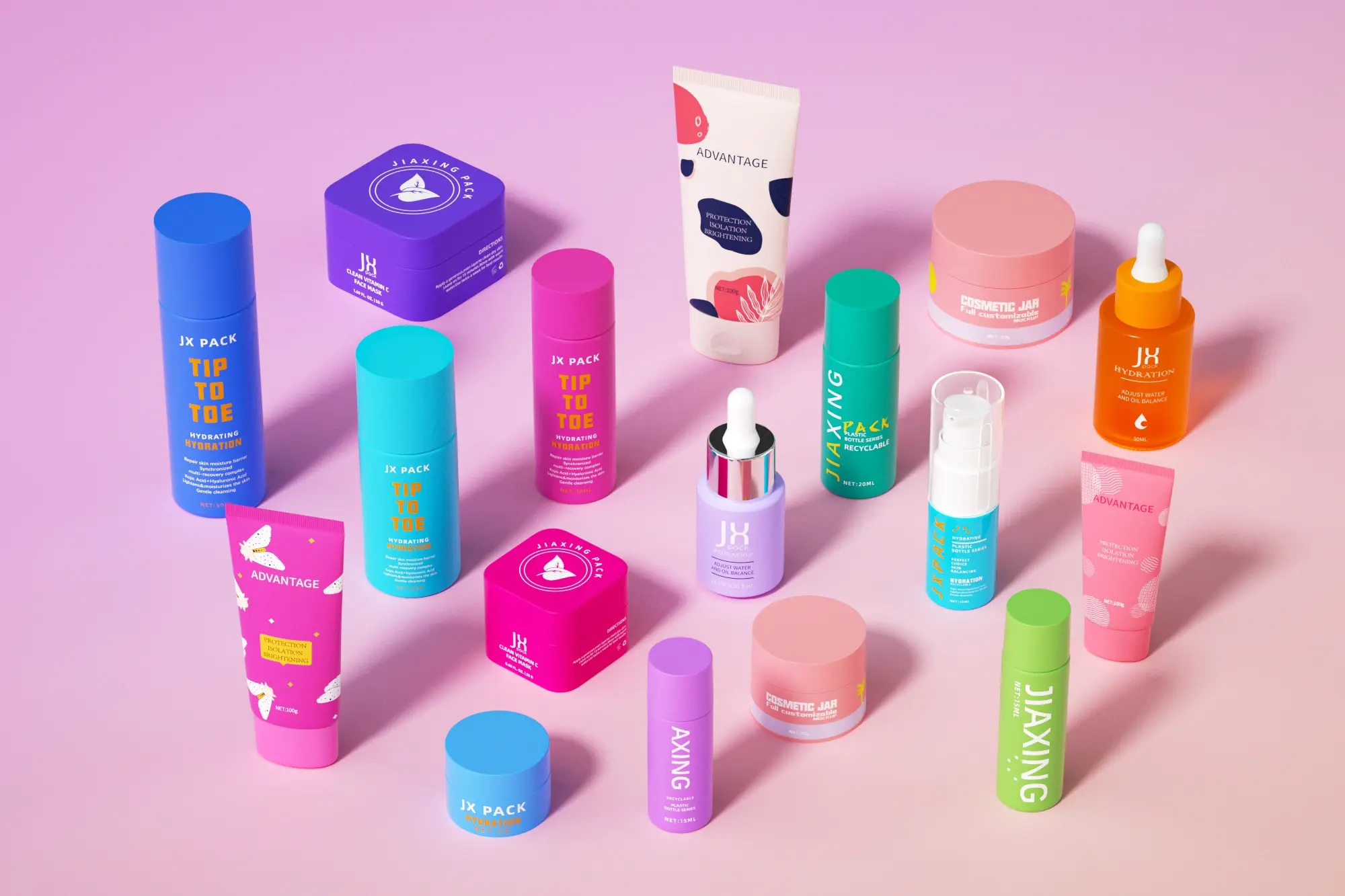
Othilapak’s travel kit packaging
9. Regulatory Compliance and Practical Considerations
Navigating Travel Restrictions and Regulations
Effective travel kit packaging must address the practical realities of modern travel, particularly regarding security regulations. TSA and international travel restrictions limit liquid container sizes, typically to 3.4 ounces (100ml) or less.
Clear labeling of contents and volumes is essential, as is ensuring that containers are genuinely leakproof. Brands like Muji and Container Store have built their travel kit offerings around regulatory compliance, with clearly marked containers and transparent pouches that facilitate security screening.
Innovative solutions to these challenges include solid formulations that bypass liquid restrictions entirely. Brands like Lush and Ethique offer solid shampoos, conditioners, and even perfumes specifically for travelers, with packaging designed to store and protect these alternative formats.
Durability and Protection Requirements
Travel conditions can be harsh on products. Effective travel kit packaging must protect contents from pressure changes, temperature fluctuations, and the inevitable jostling of transit.
Material selection is critical—silicone has emerged as a preferred material for travel containers due to its flexibility, durability, and resistance to temperature changes. Brands like Cadence and Stasher have created innovative silicone travel containers that can withstand the rigors of travel while remaining environmentally responsible.
Waterproofing features prevent leakage disasters, with double-seal technologies and leak-proof guarantees becoming standard in premium travel kits. Climate-resistant packaging addresses the challenges of traveling between different environments—from dry airplane cabins to humid tropical destinations.
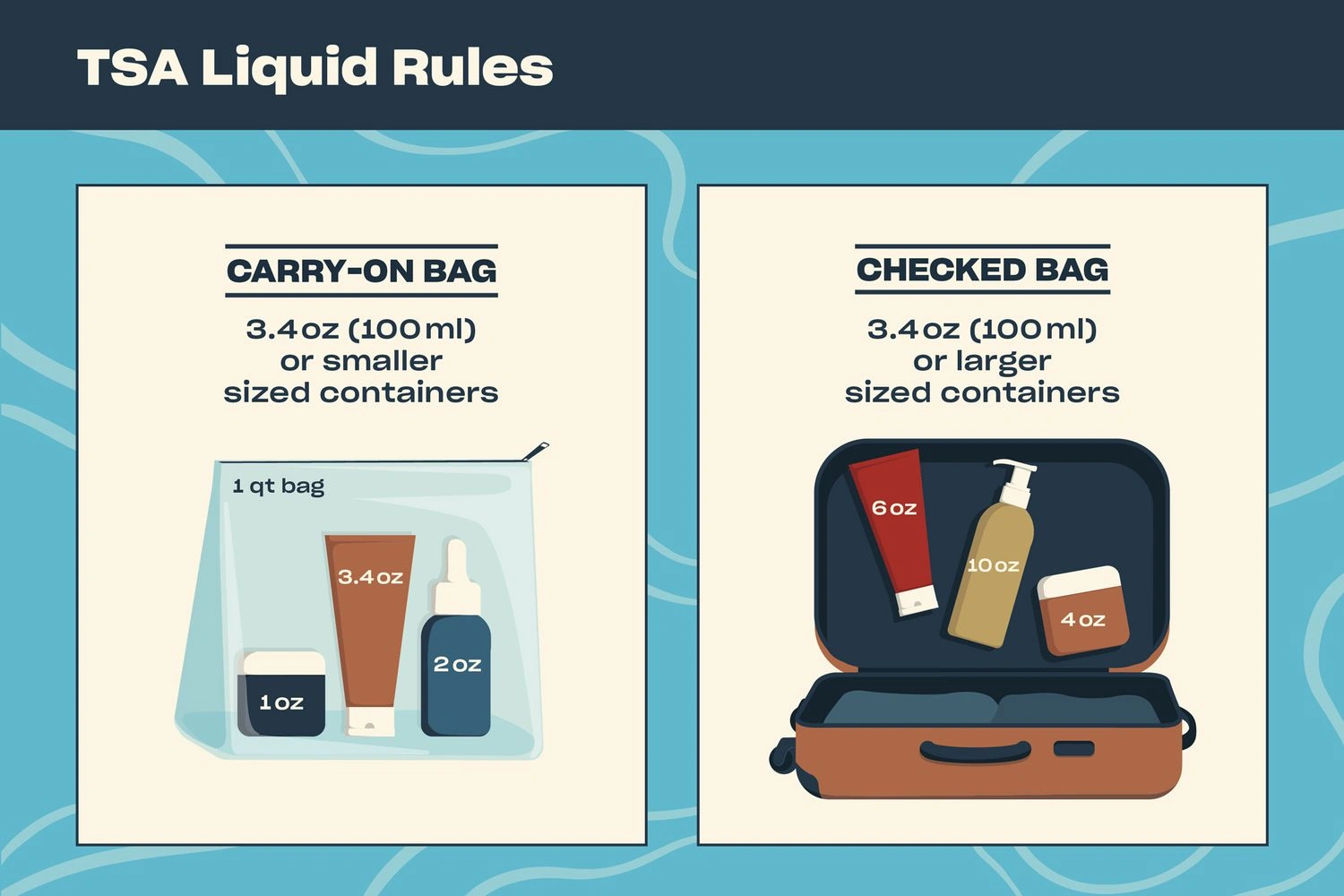
Everything You Need to Know About TSA Liquid Rules
10. Brand Opportunities and Market Positioning
Premium Materials and Finishing Techniques
The luxury travel kit segment continues to grow, with affluent travelers willing to pay premium prices for exceptional quality and distinctive design. In this market, materials make a crucial difference in perceived value.
Genuine leather, recycled aluminum, sustainable hardwoods, and glass components communicate luxury while potentially offering environmental benefits. Finishing techniques like embossing, debossing, foil stamping, and soft-touch coatings add tactile luxury that justifies premium pricing.
Louis Vuitton’s travel kits feature their iconic monogrammed canvas with leather trim, instantly recognizable and coveted. Aēsop uses amber glass bottles and aluminum tubes that protect their formulations while conveying pharmaceutical heritage and quality.
Exclusive Collaborations and Limited Editions
Strategic partnerships have become a cornerstone of luxury travel kit marketing. Airlines like Emirates and Qatar Airways collaborate with luxury brands such as Bulgari and Diptyque on exclusive first-class amenity kits that passengers covet and collect.
Designer collaborations create collector’s item travel kits that command premium prices. When Rimowa partnered with Supreme on a limited edition travel kit, it sold out within minutes despite its high price point. Similarly, when artist Yayoi Kusama collaborated with Louis Vuitton on travel accessories, the limited availability created a frenzy among collectors and luxury travelers alike.
These limited editions create urgency and exclusivity that elevate the brand while generating substantial publicity. For luxury hotels, custom amenity kits have become a significant differentiator, with properties like Aman and Four Seasons commissioning bespoke designs that guests often take home as souvenirs.

Exclusive First Class Emirates & Bulgari amenity kits
11. Mass Market and Accessible Travel Kit Innovations
Cost-Effective Sustainability Solutions
While luxury brands can absorb the higher costs of certain sustainable materials, mass market brands must find cost-effective approaches to sustainability. Innovations in this space include using post-consumer recycled (PCR) plastics, which are increasingly competitive with virgin plastics in terms of cost.
Brands like Target’s Smartly and Amazon’s Solimo have introduced travel kits with simplified packaging made from recycled materials, demonstrating that sustainability can be accessible at lower price points. Unilever’s Love Beauty and Planet uses 100% recycled plastic for their travel-sized products without significantly increasing retail prices.
Compression technology reduces material usage while maintaining functionality. Brands like EcoTools use compressed bamboo fibers for travel kit components, reducing both material costs and shipping weights while offering an environmentally friendly alternative to plastic.
Customization at Scale
Advances in digital printing and manufacturing technologies have made mass customization increasingly viable. Brands can now offer personalized travel kits at scale without prohibitive cost increases.
The Daily edited (TDE) offers monogrammed travel pouches at accessible price points by implementing efficient customization processes. Function of Beauty creates customized travel-sized hair care products with personalized packaging, using algorithms and automated production systems to maintain affordability.
QR codes linking to personalized digital content offer another avenue for mass customization. Neutrogena’s travel kits include unique QR codes that direct customers to personalized skincare advice based on a brief online assessment, creating a customized experience without custom physical packaging.
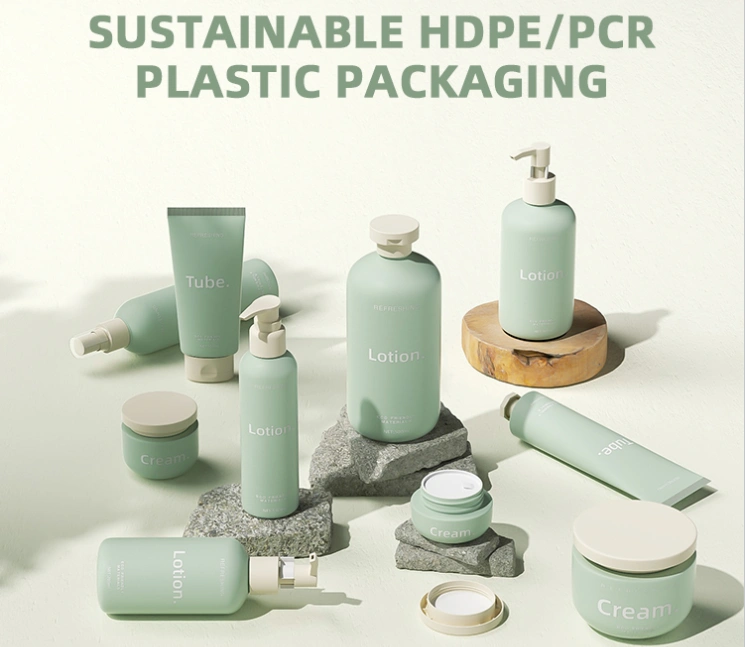
Othilapak’s sustainable HDPE/PCR packaging
12. Emerging Niche Markets and Specialized Travel Kits
Adventure and Outdoor Travel Packaging
The adventure travel segment demands specialized packaging solutions that can withstand extreme conditions. Waterproof, shockproof, and temperature-resistant materials are essential for this market.
Brands like Yeti and Sea to Summit have developed rugged travel containers specifically for outdoor enthusiasts, using materials like silicone, reinforced plastics, and metal that can withstand being dropped, submerged, or exposed to extreme temperatures.
Multifunctional packaging is particularly valued in this segment. Snow Peak’s travel containers double as cooking vessels, while Matador’s travel kits include packaging that transforms into water carriers or dry bags. These dual-purpose designs reduce the amount of gear travelers need to carry while adding value to the product.
Wellness and Self-Care Travel Kits
The wellness travel market has expanded dramatically, with travelers increasingly seeking to maintain health routines while away from home. Packaging in this segment often emphasizes purity and mindfulness.
Brands like Rituals and This Works create travel kits with calming color palettes and natural materials that reinforce their wellness positioning. Clear labeling of benefits (sleep, energy, relaxation) helps travelers select appropriate products for specific needs.
The materials themselves often communicate wellness values—glass rather than plastic for essential oils, natural cotton bags for herbal products, and bamboo for skincare tools. These material choices reinforce the products’ natural positioning while appealing to health-conscious consumers.
Family and Multi-Person Travel Kits
Family travel presents unique packaging challenges and opportunities. Safety features become paramount, with childproof closures and non-toxic materials essential for family-oriented travel kits.
Color-coding helps families keep track of whose products are whose—a simple but effective organizational system. Brands like Babyganics and The Honest Company use distinctive colors for different family members’ travel containers.
Brands successfully targeting this market include Pacifica, which offers family travel bundles with clearly labeled products for different age groups, and Mustela, whose baby travel kits include packaging with rounded corners and secure closures designed specifically with family safety in mind.

Mustela’s baby travel kits packaging
13. Othilapak’s Comprehensive Travel Kit Packaging Solutions
Collaborative Design Process
At Othilapak, we understand that effective travel kit packaging begins with understanding your brand’s unique identity and your customers’ specific needs. Our collaborative design process brings together your brand team and our packaging experts to create solutions that align perfectly with your vision.
The process typically begins with a comprehensive briefing session where we explore your brand values, target audience, and specific requirements. Our design team then develops concept sketches and 3D renderings, allowing you to visualize the final product before any production begins.
Throughout the design phase, we maintain open communication channels, ensuring that your feedback is incorporated at every stage. This collaborative approach has helped brands like Luxury Hotel Group and EcoTravel develop distinctive travel kit packaging that reinforces their brand positioning while meeting practical requirements.
Prototyping and Testing Capabilities
Once a design concept is approved, our rapid prototyping capabilities allow us to create physical samples quickly and cost-effectively. These prototypes enable you to evaluate the look, feel, and functionality of your packaging before committing to full production.
Our comprehensive testing procedures ensure that your travel kit packaging meets all relevant standards and regulations. We conduct rigorous tests for leak resistance, drop protection, and temperature stability—particularly important for products that will face the rigors of travel.
For international brands, we provide guidance on compliance with various regional regulations, ensuring that your travel kits can be sold and used globally without compliance issues.
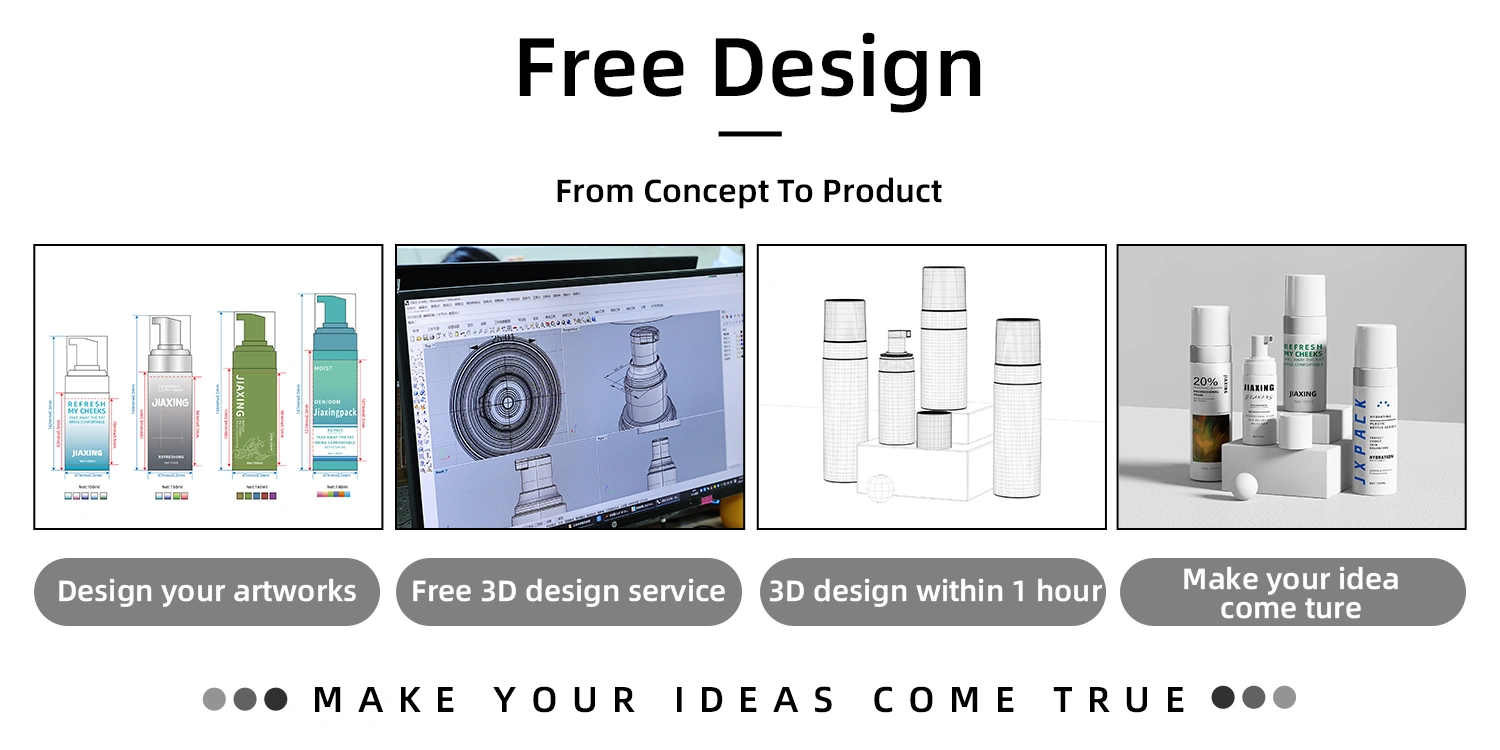
Othilapak’s Design Service
14. Sustainable Packaging Solutions
Eco-Friendly Material Options
Othilapak offers an extensive range of sustainable materials for travel kit packaging, allowing brands to align their packaging choices with their environmental values.
Our biodegradable options include PLA (polylactic acid) derived from cornstarch, which offers similar performance to traditional plastics but biodegrades under commercial composting conditions. For brands seeking recyclable solutions, we offer PET and HDPE options with high percentages of post-consumer recycled content.
For premium travel kits, our glass and aluminum containers provide durability and recyclability while conveying quality. Our bamboo components offer a renewable alternative to plastic for appropriate applications.
All our sustainable materials are backed by relevant certifications, including Cradle to Cradle, FSC (Forest Stewardship Council), and EcoCert, providing credibility for your sustainability claims.
Minimizing Environmental Impact
Our commitment to sustainability extends beyond materials to our entire production process. Othilapak’s manufacturing facilities implement energy-efficient technologies and waste reduction strategies that minimize the carbon footprint of your packaging production.
Our design team is trained to apply principles of circular economy, creating packaging that can be easily recycled, composted, or repurposed at the end of its life. We can help you implement clear disposal instructions on your packaging, ensuring that consumers understand how to responsibly handle your packaging after use.
For brands committed to carbon neutrality, we offer carbon offset programs that can neutralize the environmental impact of your packaging production and transportation.
15. Manufacturing Excellence and Quality Assurance
Production Capabilities and Capacity
Othilapak’s state-of-the-art manufacturing facilities can accommodate production runs of all sizes, from limited edition luxury travel kits to mass-market products requiring millions of units.
Our production lines are equipped with the latest technology, enabling precise manufacturing of complex designs with consistent quality. Our facilities can produce a wide range of travel kit components, including bottles, jars, tubes, pouches, and custom-shaped containers.
Our quality control processes include automated inspection systems and manual checks at multiple stages of production. Every batch undergoes rigorous testing to ensure it meets our exacting standards before shipping.
Innovative Technologies and Techniques
Othilapak continually invests in advanced manufacturing technologies that enable unique packaging features. Our capabilities include in-mold labeling for seamless decoration, multi-layer extrusion for enhanced barrier properties, and precision die-cutting for distinctive shapes and cutouts.
For brands seeking to differentiate their travel kits through special finishes, we offer a wide range of options including soft-touch coatings, metallic effects, embossing, debossing, and holographic elements.
Our digital printing capabilities enable cost-effective customization and personalization, allowing brands to create unique variations without prohibitive setup costs.
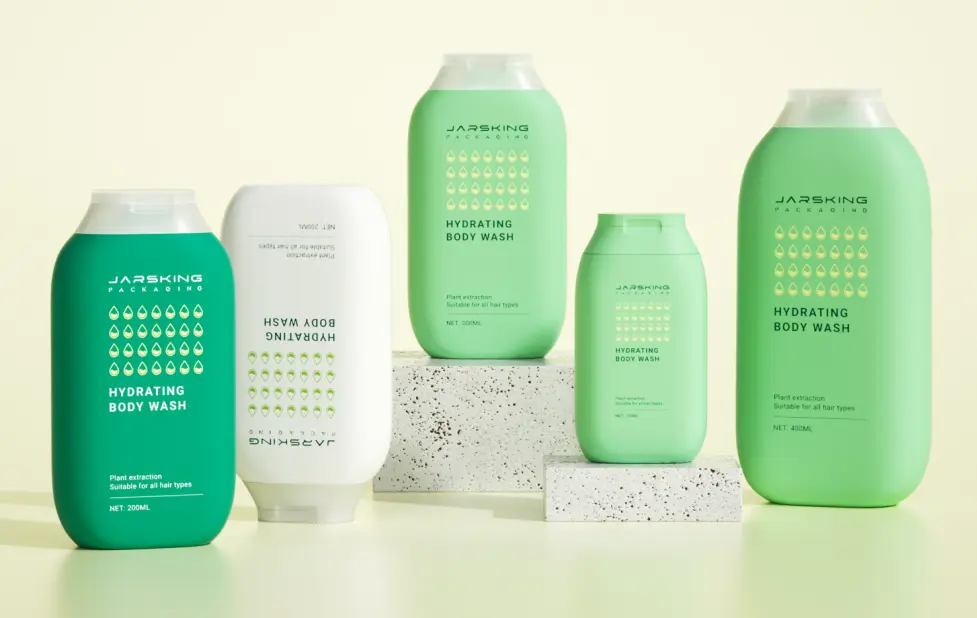
Othilapak’s New HDPE Bottle
16. Global Supply Chain and Logistics Support
Streamlined Production and Delivery
With manufacturing facilities in strategic locations across Asia, Europe, and North America, Othilapak can optimize production and delivery for global brands. This distributed manufacturing approach reduces shipping distances, lowering both costs and environmental impact.
Our integrated supply chain management systems provide real-time visibility into production status and inventory levels, allowing for precise planning and coordination with your other suppliers and marketing timelines.
For travel kit brands with seasonal demands, our flexible production scheduling can accommodate peak periods without compromising quality or delivery times.
Scalability and Flexibility
Othilapak’s production capabilities can scale with your brand’s growth. We’ve helped startups evolve from small production runs to global distribution, adapting our services to meet changing needs.
Our modular tooling approach allows for cost-effective modifications to existing packaging designs, enabling brands to refresh their travel kits without starting from scratch.
In response to market disruptions or unexpected opportunities, our agile production systems can pivot quickly, helping brands adapt to changing conditions without losing momentum.
17. Case Studies and Success Stories
Luxury Hotel Amenity Kit Transformation
A leading international luxury hotel chain approached Othilapak with a challenge: they needed to elevate their guest amenity kits to match their premium positioning while addressing growing guest concerns about sustainability.
Our design team collaborated with the hotel’s brand managers to create a distinctive amenity kit that incorporated local cultural elements unique to each property location. The packaging utilized sustainable materials including bamboo, recycled glass, and organic cotton pouches.
The result was a collection of property-specific amenity kits that guests frequently took home as souvenirs. Social media mentions of the hotel’s amenities increased by 78% in the six months following the launch, and guest satisfaction scores related to room amenities improved by 23%.

Othilapak’s Eco-friendly material travel kit packaging set
Sustainable Adventure Travel Brand Partnership
An established outdoor gear company sought to align their travel kit packaging with their environmental values without compromising on durability in extreme conditions—a challenging combination of requirements.
Othilapak developed a custom blend of bioplastics reinforced with bamboo fibers, creating containers that could withstand drops, pressure changes, and temperature extremes while maintaining biodegradability at end-of-life.
The innovative packaging won two industry sustainability awards and helped the brand secure distribution in premium outdoor retailers previously hesitant to stock products with conventional plastic packaging. Sales of their travel kits increased by 45% year-over-year following the packaging redesign.
Mass Market Beauty Brand Travel Kit Launch
A popular beauty brand with a predominantly young, budget-conscious customer base wanted to enter the travel kit market with affordable options that didn’t compromise on visual appeal or environmental responsibility.
Othilapak created a cost-effective packaging solution using post-consumer recycled PET with vibrant digital printing. The design incorporated clever die-cuts that showcased product colors while reducing material usage.
The travel kits launched at an accessible price point and sold out within three weeks of their initial release. The brand subsequently expanded the line from four to twelve variants, all produced by Othilapak with consistent quality and competitive pricing.

Othilapak’s Comprehensive Travel Kit Packaging
18. Conclusion: The Future of Travel Kit Packaging
As we look toward the future of travel kit packaging, several trends appear poised to shape the industry. Sustainability will continue to drive innovation, with biodegradable materials and refillable systems becoming increasingly mainstream. Technology integration will deepen, with smart packaging features enhancing the consumer experience and providing brands with valuable data.
The most successful travel kit packaging will balance multiple priorities—environmental responsibility, functional excellence, aesthetic appeal, and brand storytelling—while remaining adaptable to changing travel patterns and consumer preferences.
For brands navigating this complex landscape, partnership with an experienced packaging specialist like Othilapak provides a competitive advantage. Our comprehensive capabilities—from design and development through sustainable material selection and global manufacturing—enable brands to create travel kit packaging that resonates with consumers, reinforces brand positioning, and meets practical requirements.
Whether you’re a luxury hotel seeking to elevate the guest experience, an outdoor brand committed to environmental responsibility, or a mass-market beauty company expanding into the travel space, Othilapak has the expertise and capabilities to bring your vision directly to life.


